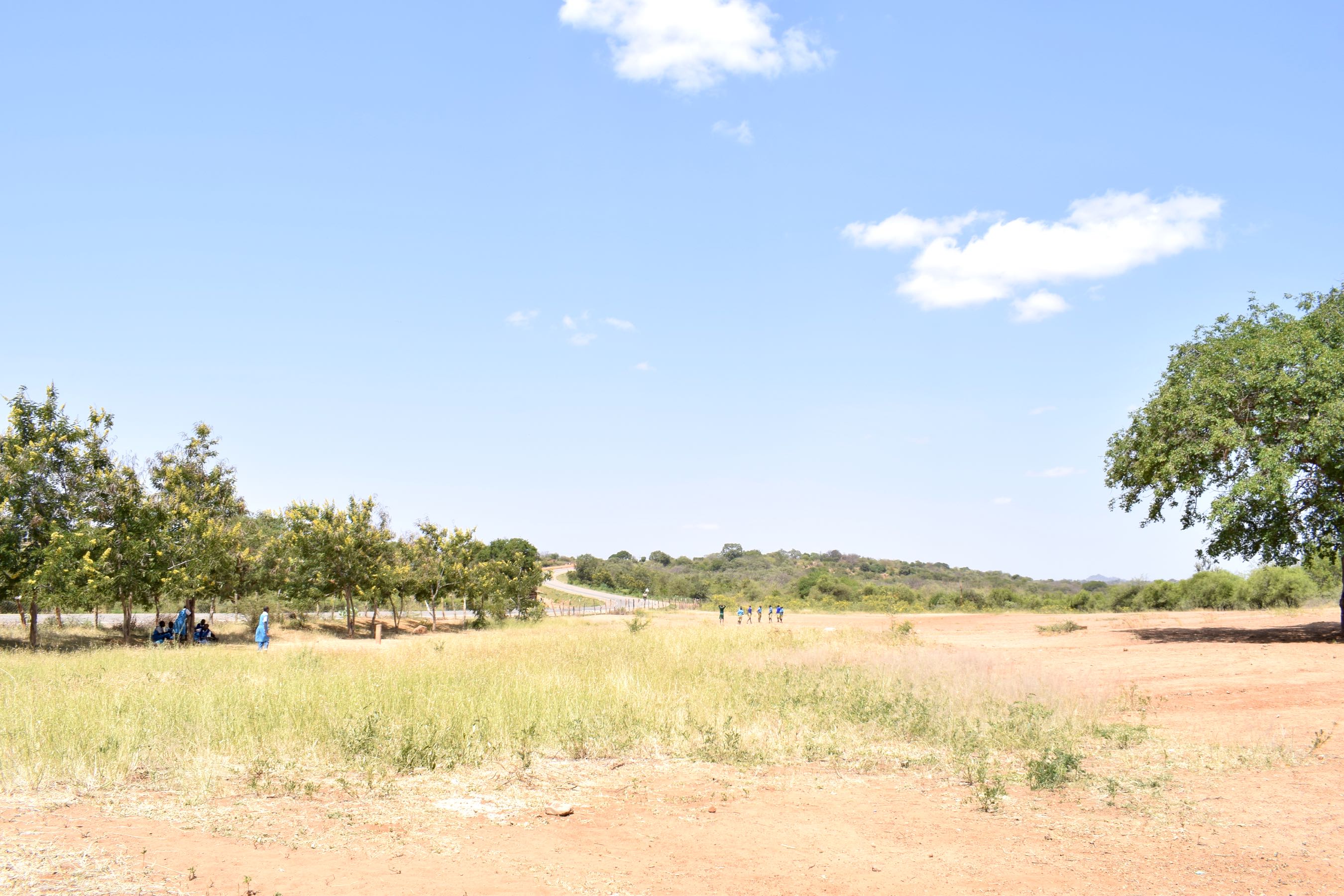Better get comfortable for the ride from our Mtito Andei office to Kylungwa Primary School in the neighboring county; it takes six hours to travel that 335 kilometers!
It was certainly a rural and peaceful area at the time of our visit, dotted with green thanks to recent rains. However, it looks like a desert during the other seasons that pass without rainfall.

The school started in 1978 to serve the children growing up in Kambusya Village. It was the full initiative of parents and community leaders and was later taken up by the District Education Board. It currently has no sponsor, so it's supported by the parents and the Constituency Development Fund, a government program that allows communities to fund local projects like schools and health clinics.
Students leave home early to arrive at school by 7am, when they're required to group up and complete different chores before morning assembly. Normal lessons begin at 8am, when students get to learn social studies, English, Swahili, science, religion, mathematics, and art. Lunch is cooked on school grounds. There are afternoon classes, and then two hours of clubs and sports before students are dismissed at 5pm.
Water
Looking around school grounds, you'll see a handful of water structures. There is a large cement tank that was built by an organization in the 1980s. Unfortunately, the quality of the work could not withstand the test of time, and it became dysfunctional. When these cement tanks cease to collect and hold water, they are often converted for other uses such as storage - or they even convert them into a kitchen.
Since then, the school has installed a tap that's connected to the Tana and Athi River Development Authority. While this connection has helped the school make great progress in addressing water scarcity, it costs money and still isn't always there when they need it.
"During the dry season, the pipeline dries out and this affects the school routine because the school feeding program stops," Headteacher Scholastica Muinde told us.
"Buying water has been expensive for the school, and latrines and classes are not washed on a daily basis. This compromises the levels of hygiene and waterborne diseases affect child development."
Sanitation
The latrines are in poor condition and dirty since they aren't washed as regularly as they should be. There is no place for students to wash hands after they finish using the latrines.
The kitchen is a temporary structure without much counter space to store utensils. It's obvious that a positive effort has been made to keep a clean environment, but the school lacks the tools and water needed to further improve. A garbage pit has been dug where litter is thrown. This keeps garbage from blowing back around campus. It is burnt when the pile gets too high.
"The school has a fair level of hygiene and sanitation which can be improved through access to clean water and availability of handwashing stations and the construction of a good kitchen," Headteacher Muinde said.
What we can do:
Training
Students and staff will be trained on hygiene and sanitation. Those in attendance will form a school health club that will promote good hygiene and sanitation practices both at school and at home. They will learn all the steps of proper hand-washing, how to treat water, and how to keep their environment clean. The school will also be taught how to best oversee and maintain their new rainwater catchment tank and handwashing stations.
Handwashing Stations
Three handwashing stations will be delivered at the project’s completion. These are 1,000-liter plastic tanks fitted with four taps. The health club and school management will be responsible for making sure tanks are filled with water and that a cleaning agent such as soap or ash is available.
Rainwater Catchment Tank
We will build a 104,000-liter rainwater catchment tank for this school. Its clean water will benefit the students, teachers, and supplementary staff. Parents will mobilize the materials needed for construction, such as sand and stone and also lend some strong arms to help with the actual construction.
As soon as the tank has time to cure, it can begin to collect rainwater for drinking, cooking, and cleaning! 104,000 liters of water will keep students and staff in class to keep focusing on learning - it will outlast the dry months that don't bring rainfall to Kitui County, Kenya.
This project is a part of our shared program with Africa Sand Dam Foundation. Our team is pleased to provide the reports for this project (edited for readability) thanks to the hard work of our friends in Kenya.

 Rainwater Catchment
Rainwater Catchment
 Rehabilitation Project
Rehabilitation Project






























